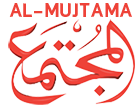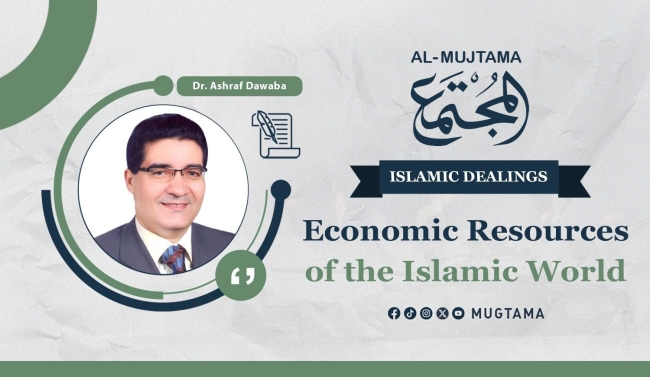Economic Resources of the Islamic World
The Islamic world encompasses 57 Islamic countries, all members of the Organization of Islamic Cooperation, spanning four continents, from Albania in northern Europe to Mozambique in southern Africa, and from Indonesia in East Asia to Guyana in western Latin America, Its territory covers one-sixth of the world's landmass and 28% of the terrestrial area.
The Islamic world is characterized by common denominators: religion, history, and civilization. It possesses economic resources that, if invested in and integrated harmoniously, could become an economic force to be reckoned with, especially considering that 37% of the population of the Islamic world live below the poverty line, accounting for about 40% of the world poverty.
Human Capital: An Economic Cornerstone for Development in the Islamic World
Human Capital
One of the most important economic resources possessed by the Islamic world is human capital, which is the foundation of development. The Muslim population worldwide is approximately two billion, constituting around 25% of the global population. The average population growth rate in the member countries of the Organization of Islamic Cooperation, measured by the difference between the birth and death rates in any country, is about 2.2%, which is a moderate rate compared to global figures. The majority of the Islamic world's population falls between the ages of 15 and 40, which is a source of strength as youth constitute the majority. If scientific, healthcare, and professional care can be provided to them, their productivity and output would increase.
Mineral Wealth
Moreover, the Islamic world possesses vast resources of oil, natural gas, and other minerals. Oil is available in about 35 countries, accounting for 43% of global production, while natural gas is found in around 25 countries, constituting 8% of global production. Additionally, Islamic countries produce 47% of global tin production.
Islamic World Possesses Vast Wealth of Oil, Natural Gas, and Other Minerals
Water Wealth
The Islamic world also possesses a vast water wealth of over half a million square kilometres, overlooking major seas, oceans, and straits, with an estimated maritime boundary of around 102,347 kilometres. Its territories encompass the entrances to the Indian Ocean and the Mediterranean Sea, and it is traversed by numerous rivers, the most significant and longest of which is the Nile River. Additionally, it includes the Niger, the Indus, the Zambezi, the Tigris, the Euphrates, the Imo, the Senegal, and other rivers. This represents a significant value in fishery production, providing drinking water necessary for human life, as well as irrigation and drinking water necessary for agricultural and livestock wealth.
Economic Activity
Looking at the economic activity sectors in Islamic countries, in terms of agriculture, Islamic world countries enjoy rich agricultural resources such as water and arable land, securing a considerable share of agricultural production. Some statistics indicate an improvement in the performance of OIC countries in total agricultural production since 2010 compared to the average of non-OIC developing countries and the global average. OIC countries are classified among the top 20 producers of major agricultural commodities globally.
Water Wealth Overlooking Major Seas, Oceans, and International Maritime Straits
Arable Land
However, the area of arable land in the member countries of the Organization of Islamic Cooperation amounted to about 23% of its total agricultural land, indicating poor investment in it. Additionally, the contributions of the agricultural sector to the gross domestic product (GDP) in OIC countries do not exceed 10%. The COVID-19 crisis, along with unstable agricultural commodity prices, environmental pressures, land reclamation, and poor utilization of water resources, have all contributed to this situation. This necessitates that OIC countries utilize agricultural integration elements among themselves, use agricultural technology to increase production, achieve food self-sufficiency, and exert every effort to enhance the growth of animal and fish wealth.
Industrial Sector
As for the industrial sector in Islamic countries, it has yet to overcome the stage of hope, being considered the engine of development. Industrial production in Islamic countries has exceeded the trillion-dollar mark and has witnessed continuous growth during the past period. The share of OIC countries in the global manufacturing value-added reached approximately 8%.
… Endowed with Rich Agricultural Resources and a Significant Share of Agricultural Production
Contributions to global manufacturing value-added vary among member countries of the organization, with Indonesia and Turkey alone accounting for more than a third of the total manufacturing value-added. This necessitates that organization countries strive to benefit from their relative advantages to enhance manufacturing integration among themselves, giving importance to technology exports, providing the organization's countries with manufactured goods, and breaking free from the manufacturing dependence on Western countries.
Commercial Sector
As for the commercial sector in Islamic countries, trade between organization countries and the outside world and among themselves remains modest. Organization countries have not received their fair share in global trade, and their contribution to the global flow of goods and services does not match their potential. They still heavily rely on importing raw materials from other countries.
Relative Advantages
Organization of Islamic Cooperation (OIC) countries represent about 9% of the global economy and account for over 11% of global trade. Intra-OIC trade volume constitutes approximately 19%. This requires concerted efforts among organization countries to leverage each country's relative advantages over the others, regulating the export and import processes, and achieving integration among them.
OIC Countries Represent Approximately 9% of the Global Economy
Today, we live in a world driven by economic blocs, where there is no place for isolation and seclusion. Those who do not possess economic strength will find no footing in this globalized world. Therefore, it is imperative for Islamic countries to leverage their commonalities and achieve their goals to make the Organization of Islamic Cooperation the nucleus for achieving Islamic economic unity, through which the Islamic world can find its path to independence.
This requires a strong political will that unites rather than divides, raising the banner of Islamic brotherhood above narrow nationalism. It acknowledges that stewardship is an Islamic duty and that true stewardship cannot exist without production that provides food, clothing, medicine, and all other necessities for the Islamic nation, away from the humiliation of dependency on the Western system.
-------------------------------------------------------------


